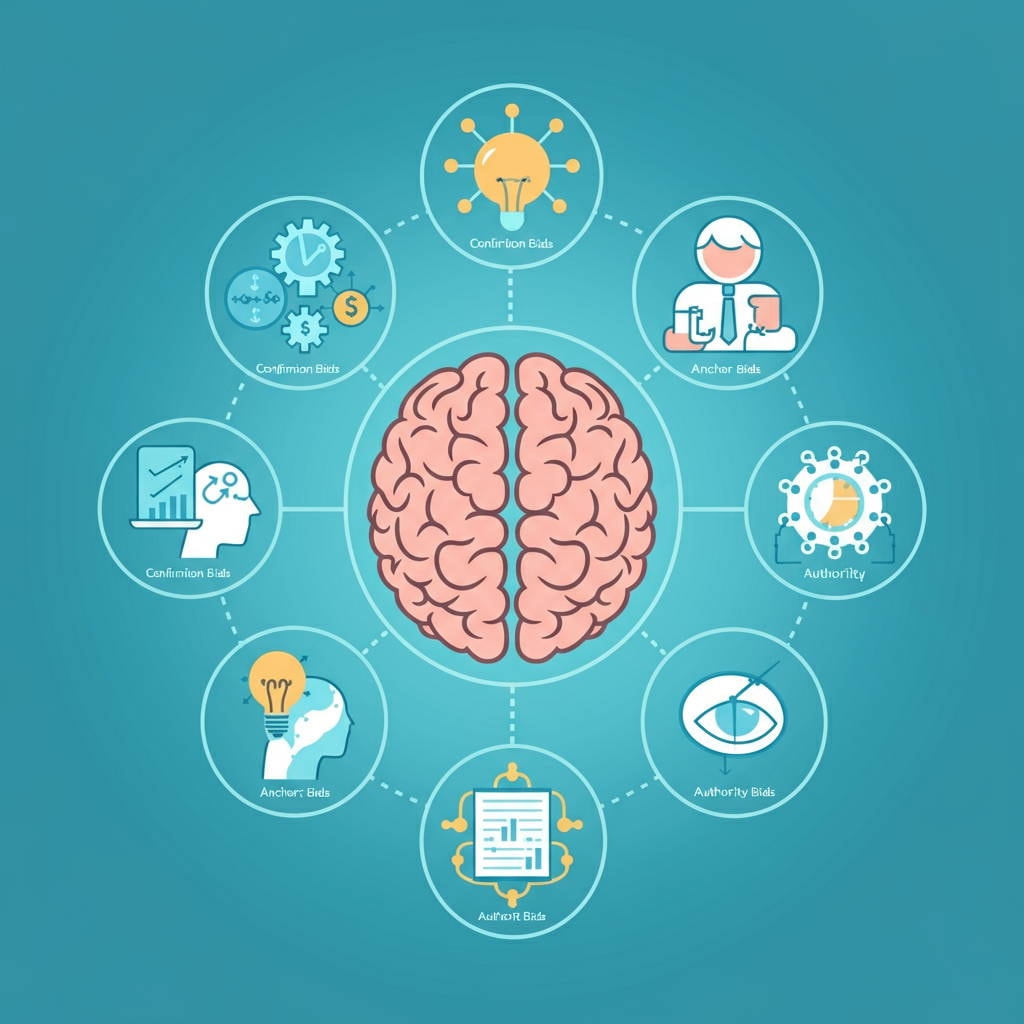Decision making is at the core of effective leadership. Whether crafting strategy, managing teams, or responding to challenges, leaders rely on their ability to think critically and make sound judgments. However, cognitive biases often influence these decisions, leading to distortions in how people interpret information, process data, and evaluate options. By understanding these mental shortcuts and their impact, decision-makers can avoid poor decisions and foster better problem-solving abilities.
The Impact of Cognitive Biases on Decision-Making
Cognitive biases are mental shortcuts that our brains use to simplify complex situations. While they help us process information quickly, they often skew our thinking, creating blind spots that affect decision-making. Research suggests that biases such as confirmation bias, availability bias, and anchoring bias can cause decision makers to favor certain outcomes, often without fully considering all the information.
For example, a leader may rely on a past success (anchoring bias) as a reference point for a new solution, even if the current situation demands a different approach. Similarly, when interpreting results or forming judgments, human beings often focus on information that supports their own beliefs while disregarding conflicting evidence. This cognitive shortcut, while efficient, increases the likelihood of poor decision-making.
To lead effectively, decision makers must overcome these blind spots by building awareness of common biases, their own actions, and external factors that influence how they think.
Confirmation Bias and Existing Beliefs

Confirmation bias influences decision makers to interpret information in ways that affirm their prior knowledge or existing beliefs. Leaders tend to give greater credence to data that aligns with their views, ignoring relevant information that challenges their perspective. This leads to poor decisions, limited innovation, and reinforced groupthink in organizational settings.
Example: Imagine a leader convinced that a particular sales strategy will outperform others. They might focus only on supporting data while overlooking warning signs raised by team members. Even when all the information points to a more cautious approach, their confirmation bias narrows their focus.
How to Counter It:
- Seek diverse viewpoints and deliberately inquire about other factors that may influence outcomes.
- Regularly question, “Am I favoring information that supports only my own position?”
- Use structured decision-making processes to evaluate both viewpoints and their impacts objectively.
Availability Bias and Mental Shortcuts
Availability bias occurs when decision makers prioritize information that is most easily recalled, often overemphasizing recent events or vivid examples. For leaders under time constraints or high pressure, this cognitive bias can lead to poor decision making based on incomplete information.
Example: If a difficult supplier issue recently captured a leader’s attention, they might place disproportionate weight on logistical risks, failing to recognize the broader scope of a new project.
How to Counter It:
- Take particular attention to historical data and research questions grounded in broader trends.
- Expand your focus to include less visible but critical factors, such as team morale or long-term planning needs.
- Evaluate whether specific events you recall are representative or simply a product of the same information being readily available.
Anchoring Bias and First Impressions

Anchoring bias centers on the tendency to overvalue the first piece of information encountered, treating it as a mental anchor when making judgments. Decision makers may cling to initial impressions or estimates, even when presented with new possibilities and evidence that suggests otherwise.
Example: A leader reviewing a candidate for promotion might allow initial performance reviews to unduly sway their judgment, even if feedback from others highlights different qualities or challenges.
How to Counter It:
- Revisit initial assumptions and deliberately cross-check them with evidence from diagnostic reasoning processes.
- Encourage others to challenge the implications of early reference points during group discussions.
- Delay deciding until all the information has been reviewed and weighed carefully.
Critical Thinking and Problem Solving Abilities

Critical thinking involves analyzing biases to make judgments rooted in logic rather than assumptions. Leaders who hone their critical thinking improve their problem-solving abilities, allowing them to approach challenges with fresh perspectives. One way to strengthen critical thinking is by addressing conformity bias and the bandwagon effect, which compel people to go along with group opinions or industry trends without challenging the rationale behind them.
Example: A leader deciding whether to adopt a new technological tool might face pressure from team members who argue, “Everyone is doing it.” This bandwagon effect can hasten decisions without evaluating whether the tool aligns with organizational goals.
How to Counter It:
- Ask, “Are we deciding based on our values or simply following what others are doing?”
- Examine external factors, such as the competitive landscape, and weigh their relevance to your organization.
- Promote a culture that rewards dissenting opinions, helping broaden the pool of ideas and create better decisions.
Identifying Other Biases for Better Decision Making
- Authority Bias: People tend to favor advice from perceived experts over ideas from peers or subordinates, even when the latter might offer valuable insights. Leaders should weigh ideas based on merit, not on status.
- Self-Serving Bias: Leaders sometimes interpret outcomes as reflections of their own effort or skill while attributing failures to external factors, reducing their ability to evaluate their own actions. Practicing honest self-reflection is key to avoiding this tendency.
- Gender Bias: Implicit biases regarding gender can influence hiring, promotions, or collaborations, often to the detriment of equitable decision making processes. Leaders must focus on objective criteria and intentionally challenge stereotypes.
Framing and the Influence of Context
The framing bias highlights how the way information is presented can influence decision-making outcomes. For example, framing an initiative as a means to “avoid losses” versus “achieve gains” taps into human tendencies like loss aversion, where individuals give more weight to avoiding setbacks than pursuing progress. Decision makers must remain aware of how their appraisals are shaped by such framing effects.
How to Counter It:
- Restate decisions in multiple ways to ensure clarity and balance in how options are perceived.
- Enlist feedback to identify whether particular framing may create blind spots or amplify biases unintentionally.
Leveraging Behavioral Economics to Mitigate Bias
Behavioral economics offers tools to understand human tendencies and their impact on decision-making processes. Concepts like the feature positive effect, which highlights our focus on present rather than absent information, help leaders see the gaps that might affect how they interpret information. Similarly, awareness of the false consensus effect (assuming greater agreement with your perspective than exists) builds a bridge toward more empathetic, people-focused leadership.
Action Steps:
- Take deliberate steps to reflect on your own biases, including those stemming from optimism bias or overconfidence bias.
- Pay closer attention to the behaviors of others within your team as well as how your own beliefs might influence their decisions.
- Regularly revisit decision-making frameworks to ensure all perspectives are represented.
Final Thoughts
Cognitive biases are a natural part of human thinking, but they don’t have to dictate leadership outcomes. By bringing greater awareness to these biases, leaders can expand their critical thinking, process decisions more holistically, and avoid common pitfalls like poor decision making or overlooking key information.
Practicing mindfulness, seeking alternative perspectives, and refining problem-solving strategies will not only reduce the negative effects of cognitive biases but also open the door to better decisions grounded in fairness, clarity, and evidence. Leadership excellence comes from a willingness to learn, adapt, and rise above the limitations of your own mind. With time and intentional practice, the capacity to lead with integrity and effectiveness will only grow stronger.
To find out how Bridgeline Executive Coaching and Leadership Development can support you, or to set up a coaching session with Nick Tubach, contact Bridgeline Executive Coaching.



